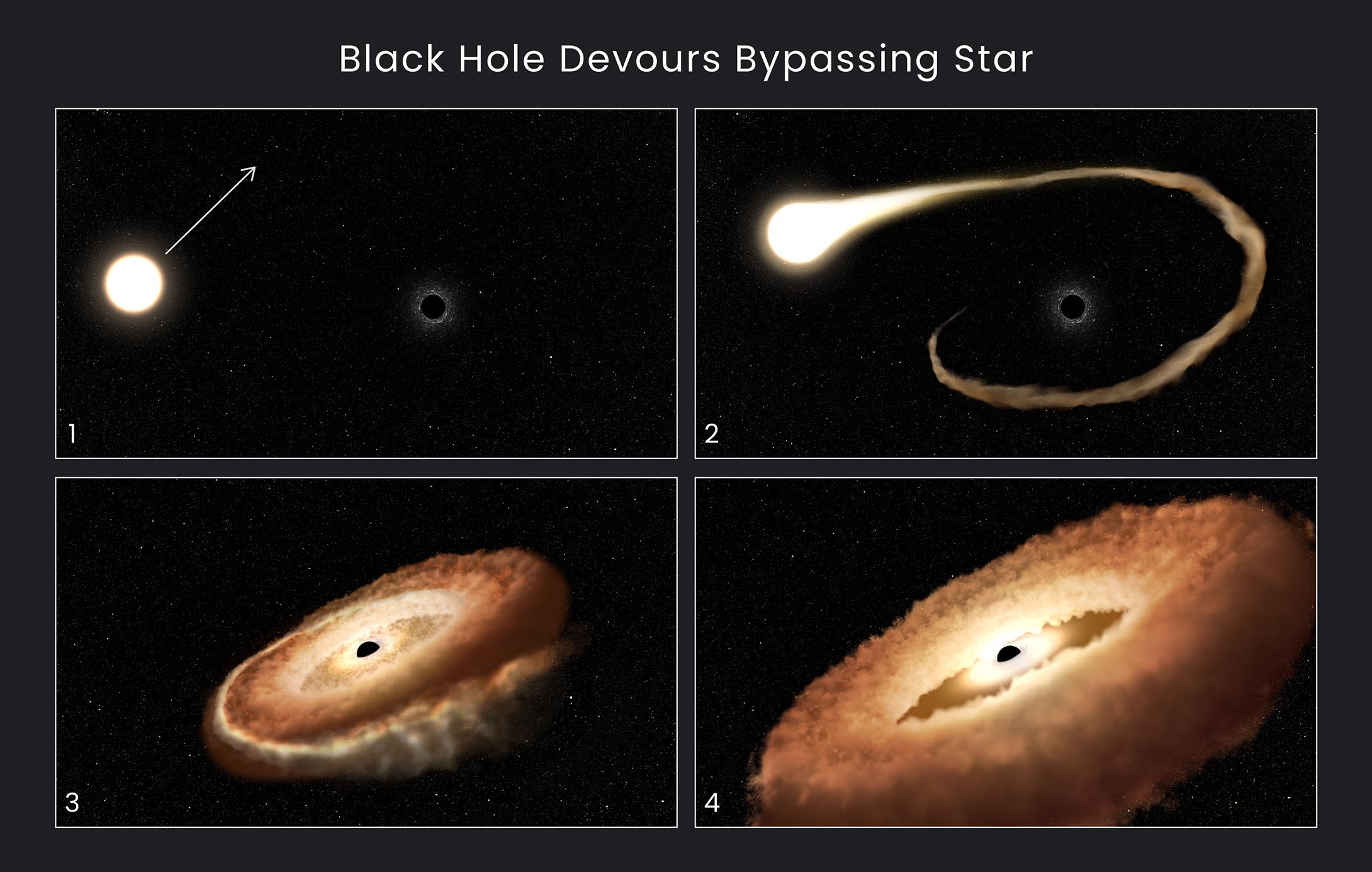STScI: Hubble Finds Hungry Black Hole Twisting Captured Star Into Donut Shape

Black holes are gatherers, not hunters. They lie in wait until a hapless star wanders by. When the star gets close enough, the black hole’s gravitational grasp violently rips it apart and sloppily devours its gasses while belching out intense radiation.
Astronomers using NASA’s Hubble Space Telescope have recorded a star’s final moments in detail as it gets gobbled up by a black hole.
These are termed “tidal disruption events.” But the wording belies the complex, raw violence of a black hole encounter. There is a balance between the black hole’s gravity pulling in star stuff, and radiation blowing material out. In other words, black holes are messy eaters. Astronomers are using Hubble to find out the details of what happens when a wayward star plunges into the gravitational abyss.
Hubble can’t photograph the AT2022dsb tidal event’s mayhem up close, since the munched-up star is nearly 300 million light-years away at the core of the galaxy ESO 583-G004. But astronomers used Hubble’s powerful ultraviolet sensitivity to study the light from the shredded star, which include hydrogen, carbon, and more. The spectroscopy provides forensic clues to the black hole homicide.
About 100 tidal disruption events around black holes have been detected by astronomers using various telescopes. NASA recently reported that several of its high-energy space observatories spotted another black hole tidal disruption event on March 1, 2021, and it happened in another galaxy. Unlike Hubble observations, data was collected in X-ray light from an extremely hot corona around the black hole that formed after the star was already torn apart.
“However, there are still very few tidal events that are observed in ultraviolet light given the observing time. This is really unfortunate because there’s a lot of information that you can get from the ultraviolet spectra,” said Emily Engelthaler of the Center for Astrophysics | Harvard & Smithsonian (CfA) in Cambridge, Massachusetts. “We’re excited because we can get these details about what the debris is doing. The tidal event can tell us a lot about a black hole.” Changes in the doomed star’s condition are taking place on the order of days or months.
For any given galaxy with a quiescent supermassive black hole at the center, it’s estimated that the stellar shredding happens only a few times in every 100,000 years.
